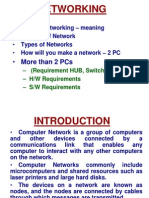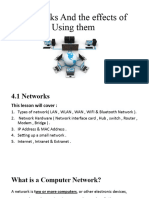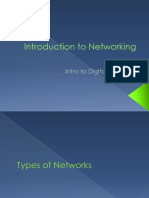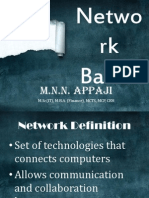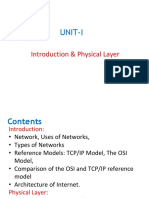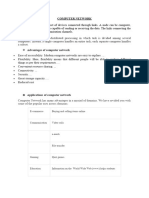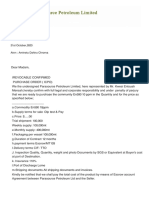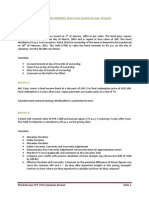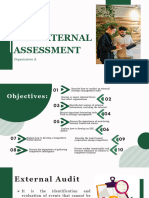0% found this document useful (0 votes)
20 views11 pagesNETWORK
The document provides an overview of computer networks, detailing their advantages and disadvantages, types (LAN, WAN, PAN), and key components such as routers, switches, and network protocols. It discusses data transmission methods, including packet switching and IP addressing, as well as security measures like authentication and encryption. Additionally, it covers network topologies and the differences between wired and wireless networking, highlighting their respective benefits and drawbacks.
Uploaded by
shaambavyCopyright
© © All Rights Reserved
We take content rights seriously. If you suspect this is your content, claim it here.
Available Formats
Download as DOCX, PDF, TXT or read online on Scribd
0% found this document useful (0 votes)
20 views11 pagesNETWORK
The document provides an overview of computer networks, detailing their advantages and disadvantages, types (LAN, WAN, PAN), and key components such as routers, switches, and network protocols. It discusses data transmission methods, including packet switching and IP addressing, as well as security measures like authentication and encryption. Additionally, it covers network topologies and the differences between wired and wireless networking, highlighting their respective benefits and drawbacks.
Uploaded by
shaambavyCopyright
© © All Rights Reserved
We take content rights seriously. If you suspect this is your content, claim it here.
Available Formats
Download as DOCX, PDF, TXT or read online on Scribd
/ 11















